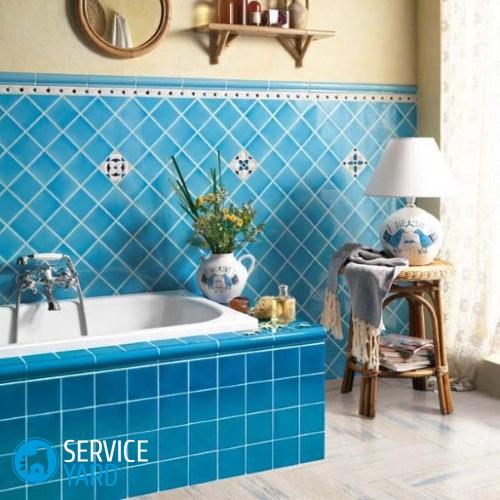How to clean silicone sealant?

During repair, silicone is used to seal joints of various surfaces reliably. But during operation, it begins to exfoliate in some places, acquiring an untidy, dirty color. Therefore, when replacing the old material with a new one, the question always arises: how to clean the silicone sealant so as not to damage the surface. You will learn about all suitable tools for this purpose from this article.
to contents ↑Varieties of silicone sealants
Before deciding on a tool for removing silicone sealant, it is necessary to find out its qualitative composition.
All sealants are divided into two groups:
- One component.
- Two-component.
Important! 1-component sealants are used in construction, in everyday life, and the second group is used mainly in industry.
One component sealant is classified as follows:
- Alkaline These are special purpose sealants. They are made on the basis of amines.
- Acidic. Basically, such building mixtures contain acetic acid. The smell of acid can be felt during the hardening of the composition. Such material is affordable, in addition, it is universal in application. This type of sealant is marked with the letter “A”.
Important! This type of sealant is incompatible with materials that include cement or marble with alkali content. Also, this material accelerates the corrosion process of most non-ferrous metals, so you can not use it on such surfaces.
- Neutral In the production of this type of sealant, acetic acid is replaced with ketoxime or alcohol. This type of material can be used for joining any surfaces.
Sealant Applications
Docking material is distinguished by purpose and method of application, in particular, options may be as follows:
- Plumbing silicone - used for sealing threaded connections, as well as for sealing showers, plumbing, bathtubs.
- Glue-sealant - used in the manufacture of aquariums, stained-glass windows and other glass structures.
- Composition with antifungal additives - used by the owners of pools, aquariums, as well as professional builders and motorists.
to contents ↑Important! The advantages of silicone include the following:
- The material is able to perfectly fill the voids.
- Perfectly glues surfaces.
- It is resistant to mechanical stress.
- The increased durability during operation of any design.
Methods for removing old silicone sealant
Sealants are universal for sealing various joints and crevices, as during use they adhere to surfaces tightly. Therefore, to remove the silicone sealant, you need to try very hard. To achieve the goal, you can use a chemical or mechanical method, or better, combine these methods at the same time.
How to remove sealant mechanically?
The mechanical method is suitable only for surfaces that are not afraid of chips and scratches, as well as for those whose appearance is not of paramount importance. The process of removing old material consists in scraping off unnecessary silicone with various tools.
Tools and Tools
In order to remove the sealant mechanically, use the following improvised materials and tools:
- Abrasive powder products.
- Metal scraper.
- Putty knife.
- Sandpaper.
- Clerical or shoe knife.
- Blade.
- Brush for sweeping old material.
- Sponge for washing dishes (household washcloth).
Mechanical cleaning technology:
- First cut off a thick layer of silicone using a clerical or boot knife. You can use a sharp scraper or a narrow spatula for this purpose.
- Using a brush, remove the cut-off old material.
- Apply abrasive to silicone residue.
- Using a dishwashing sponge or household washcloth, thoroughly clean the surface.
- For fine sanding, use fine-grained sandpaper.
- Wash remaining traces with water and any detergent.
Important! To facilitate the whole process and as efficiently as possible, quickly clean the silicone sealant in the bathroom or any other room, consider these additional recommendations:
- Removing silicone will be much faster if the depth of cut of the sealant with a knife reaches the base of the material on which the seam is held.
- To prevent damage to your hands, use a blade with a plastic handle.
Chemical method for removing sealant
Removing silicone using modern chemicals is much faster, easier and safer. Since neutral sealants are mainly used in everyday life, we will consider the main chemical products designed to remove them.
For example:
- to soften acid silicone, use 70% of the essence of acetic acid;
- alcohol sealants are effectively dissolved by technical or medical alcohol;
- for the rest - neutral silicones, you can use acetone, gasoline or white spirit.
Surface cleaning using acetone, salt, white spirit
Universal and affordable are solvents such as acetone and white spirit. Use them as follows to remove silicone sealant from the surface you need:
- As much as possible clear a thick layer of the hardened building mix mechanically, using a knife, razor or scraper.
- Dampen a cleaned surface with acetone or mineral spirits with a soft cloth.
- Leave the product for an hour - during this time, the silicone should turn into a jelly-like substance.
- Pry off the bottom layer of material with a sharp object and try to remove the old silicone sealant as a whole.
- Repeat the procedure until the surface is completely cleansed.
Important! If the contamination is old, then leave the solvent overnight, in the morning it will be much easier to remove the silicone.
- Put salt on rags and lightly moisten with water.
- Use a gentle circular motion to thoroughly clean the surface.
- Wash the surface with warm water and soap to completely remove all chemical ingredients.
Important! If the silicone cannot be cleaned, then heat it to a temperature of +400 degrees, after which the sealant itself will lag behind a smooth surface. For this purpose, you can use a building hair dryer.
Active chemicals for cleaning
For silicone sealants with any vulcanizing agent, special solvents are available on the shelves of construction supermarkets.
Important! If it is necessary to remove the old sealant layer with an unknown composition, use a special solvent, not improvised means.
Solvents are available in the form of foam, paste, solution and aerosol. The following drugs have proven themselves well:
- Penta-840;
- Lugato
- Antisil;
- Quilosa;
- Silikon-Entferner;
- CRC Gasket Remover;
- Dow Corning OS-2.
Important! The above foreign-made drugs are more effective than domestic ones, but they cost an order of magnitude higher. Before using a chemical agent, it is imperative to read the instructions and protect yourself with protective equipment: rubber gloves, safety glasses.
Use special solvents as follows:
- Perform a test cleaning in a small area to check the surface reaction to the preparation. Carefully ensure that the product does not corrode enamel, paint or other coating.
- If you are using an aerosol silicone sealant remover, wear a face mask and gloves to protect yourself.
- Remove a thick layer of silicone with a knife.
- Apply to remaining sealant.
- Leave the product for a while (according to the instructions). During this time, the silicone softens and will resemble jelly.
- Wipe off any mortar with a dry cloth.
- Wash the surface with water and detergent.
How to remove sealant from the bath?
Before removing the silicone sealant from the bath, you need to know the composition of the plumbing itself.
Important! On acrylic bathtubs, you can not use pasty, emulsion preparations that contain abrasive substances, as they can damage the surface of the font. For acrylic baths, use liquids or aerosols. Before using the chemical, it is also necessary to check the reaction of the bath coating to the active chemical.
You can remove the silicone sealant from the bathtub mechanically:
- Cut off the top layer of sealant with a knife or metal spatula (screwdriver).
- Dismantle the bath (if the sealant is not completely removed, cut it off with a knife).
- Remove silicone residues with fine sandpaper or pumice. Work very carefully so as not to damage the surface of the font.
- Clean the mounting holes from any remaining dirt using a screwdriver or knife tip.
- Wipe the surface of walls and plumbing with a clean rag.
to contents ↑Important! To clean the enameled bath, the mechanical method is not suitable, since a knife, pumice or sandpaper will only scratch the surface. Restore it will be almost impossible. Use only special chemicals for cleaning.
How to remove silicone sealant from various surfaces?
During the repair, silicone has to be removed from various surfaces, such as tiles, car glass, plastic, hand skin, clothes. To be “fully armed”, listen to our recommendations.
How to remove old sealant in a bathroom from a tile?
Silicone must be removed from ceramic tiles with the utmost care, as the smooth surface of the tile can be damaged by a metal scraper or knife.
To clean the surface of the tile and not damage it, proceed as follows:
- Using a stationery knife, cut off the thick top silicone layer without touching the surface of the tile.
- Apply white spirit, gasoline, or commercial solvent to the remaining sealant.
- Leave the product for several hours.
- Pry off the jelly-like material with a wooden spatula and remove it.
- Rinse the tiles off the remaining silicone.
Important! For colored tiles, first perform a test clean to test the reaction of the colored surface of the tile.
What else should be considered when working with tiles:
- Sometimes the sealant is not removed in a whole strip due to the poor composition of the building mixture or improperly selected means. Treat the surface of the tile with a cloth moistened with solvent (pick up another agent if necessary) until the silicone begins to curl, and then remove the spools with a dry cloth.
- To remove silicone sealant from a tile having a porous rather than a smooth base, alternately apply solvent to the tile and clean the softened material with a pumice or scraper.
How to remove sealant from plastic?
It is very easy to remove silicone from plastic, as its adhesion to this material is very weak:
- Plastic shower cabins, pipes, pallets can be washed from the sealant if you first moisten them with a solvent (for 30-60 minutes).
- Wash off any remaining silicone marks with any degreasing agent.
- If, when applying a primer to the surface of the plastic, the primer was first used, this will complicate the cleaning task a little, since it is difficult to choose the appropriate solvent. It will be necessary to connect mechanical cleaning to the chemical method.
Important! When removing sealant from plastic surfaces, the Dow Corning OS-2 solvent proved to be excellent. This product is suitable for acrylic bathtubs as well as for plastic pipes.
How to remove sealant from clothes?
If silicone gets on clothing, wash the product immediately at high temperature. Unhardened sealant can be washed off very easily.
If time is lost, the sealant has polymerized, then remove the silicone from the work clothes with a special compound to dissolve the sealant. Apply the product for 30-60 minutes, then wipe off the traces in the usual way.
In the case of colored clothing or a product whose appearance is important to you, try mechanical cleaning:
- Fold, stretch and fix the fabric on a flat surface.
- Remove dirt from the fabric with a scraper or wire brush.
- Wipe the remaining trace with a solvent suitable for the tissue: white spirit, alcohol, vinegar essence or gasoline.
- Soak and wash clothes.
to contents ↑Important! Additional tips will help you cope with the task even easier:
- Sealant stains can be removed hot. Apply any solvent to contamination. After several layers of gauze or paper, iron the item with a hot iron. Repeat the procedure until the stain disappears.
- A universal tool for removing silicone is cold. Wrap the stained item in a bag and place in the freezer for 3-4 hours. After - remove the package, gently remove the frozen film from the clothes.
- Experienced builders use isopropyl alcohol to remove hardened silicone film.
- Remains of silicone are also removed from clothing with hydrogen peroxide. Apply the product on a contaminated surface until the product stops foaming. Then wash clothes in the usual way.
Prevention is the best deal with the consequences
Some particularly strong formulations after solidification simply cannot be removed. Therefore, when carrying out repairs, follow simple preventative measures:
- When working with silicone, immediately protect your skin from contact with the sealant. Work only with gloves.
- Drops falling on the surface of the sealant should be removed immediately. After solidification, the cleaning process will take a lot of effort, money and time.
- Leave notes on what type of sealant you used in the bathroom or other room so that you can quickly select a solvent to remove it if necessary.
- Use masking tape when applying sealant to the surface. You will get perfect contours of the seams and a clean surface, without drops and smudges.
- Excess fresh sealant remaining after sealing joints and crevices, immediately remove with a cloth with table vinegar.
Stock footage
Use a universal joint sealant carefully and carefully. Try so that the sealant does not leave “unpleasant memories” in the form of traces and spots. Follow preventative and safety measures, and in case of unforeseen contamination, fight them immediately with the methods and means that you learned about in this article.
- How to choose a vacuum cleaner taking into account the characteristics of the house and coatings?
- What to look for when choosing a water delivery
- How to quickly create comfort at home - tips for housewives
- How to choose the perfect TV - useful tips
- What to look for when choosing blinds
- What should be running shoes?
- What useful things can you buy in a hardware store
- Iphone 11 pro max review
- Than iPhone is better than Android smartphones







